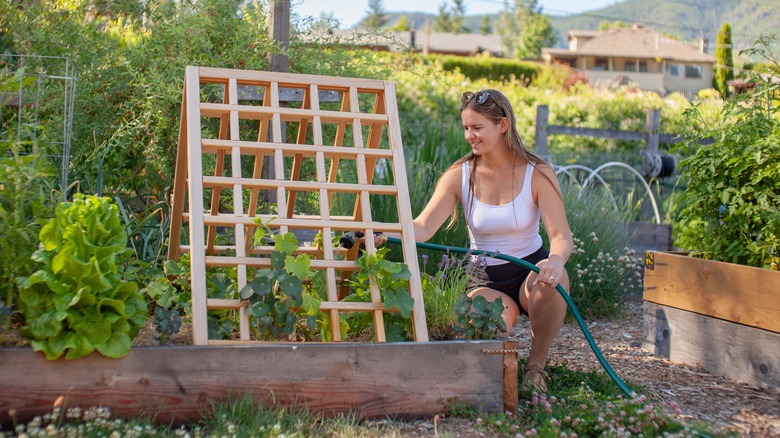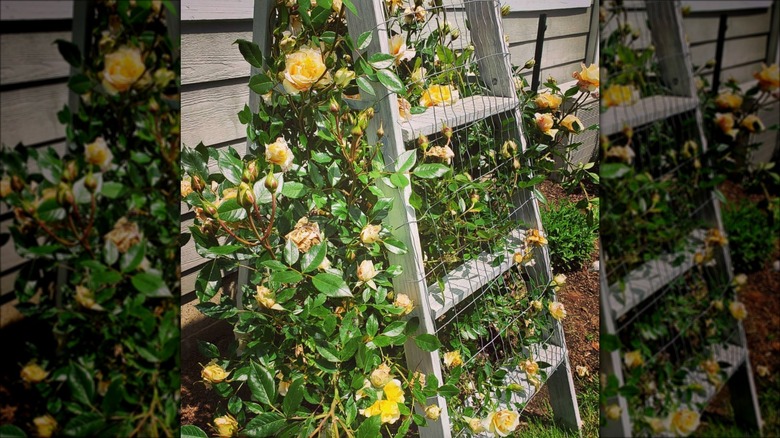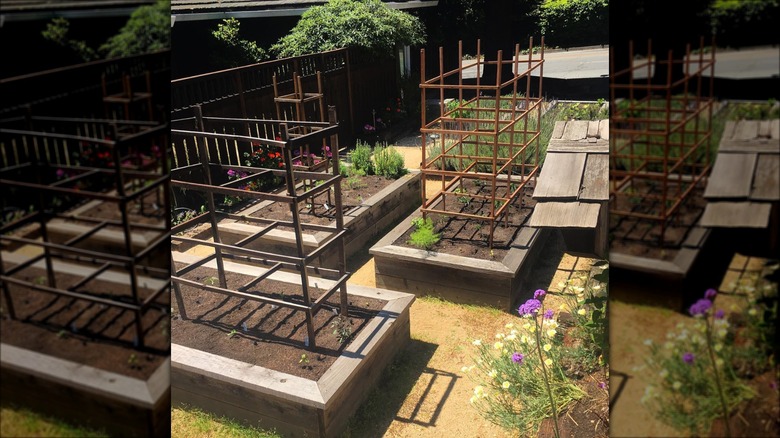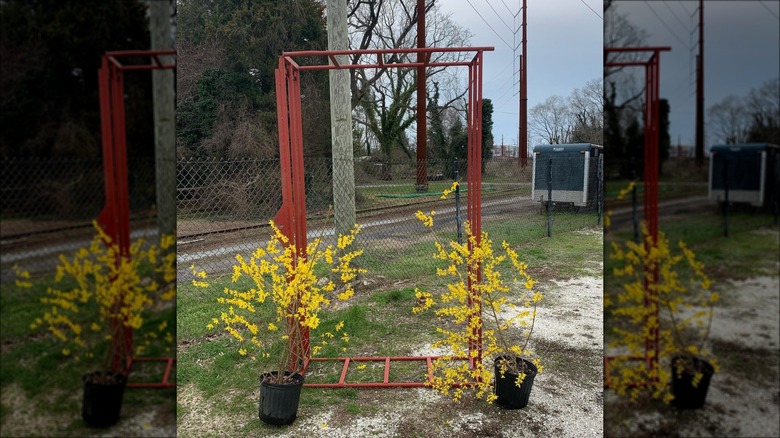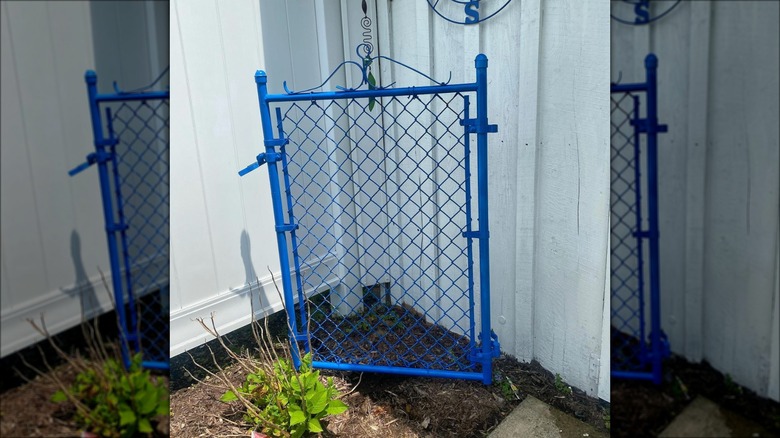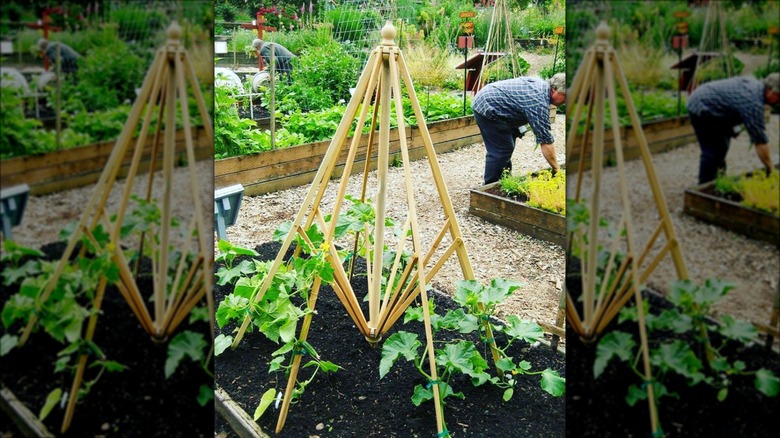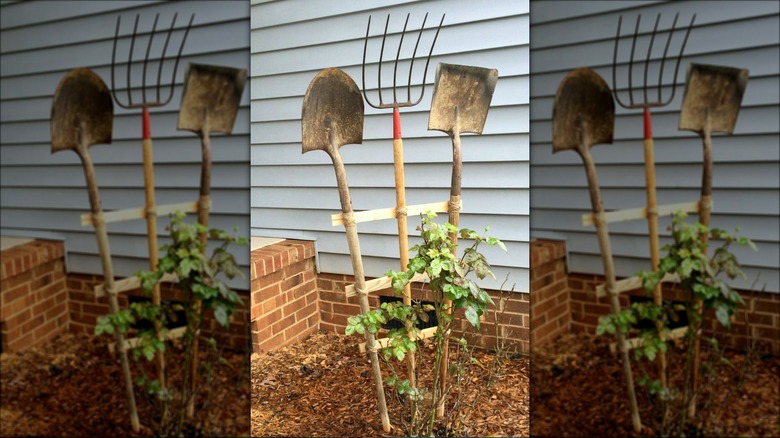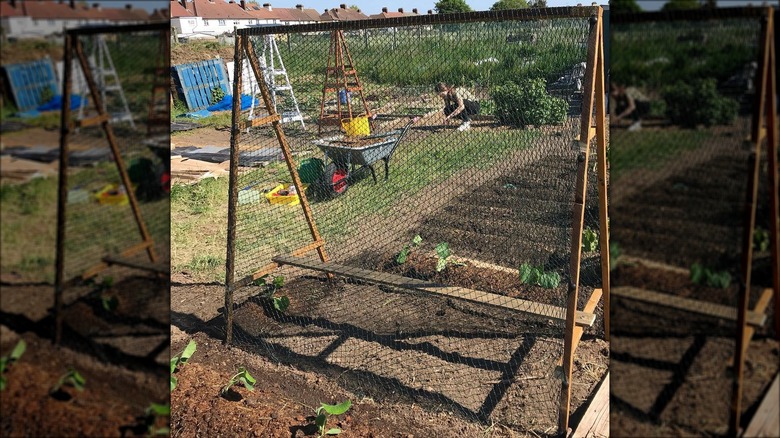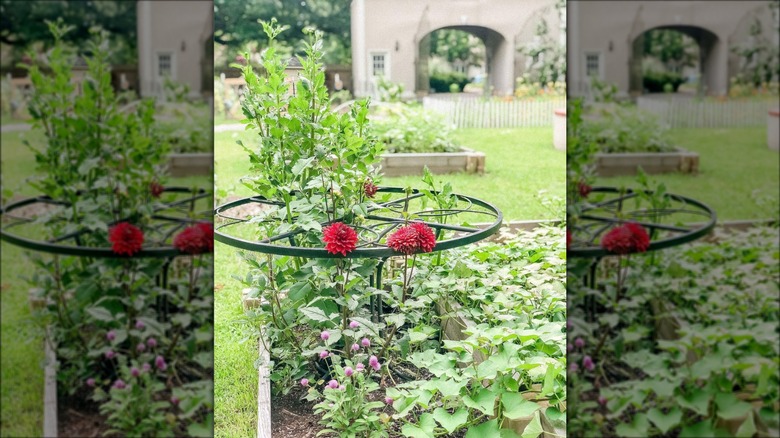8 Clever Ways To Repurpose Old Lawn & Garden Items Into A DIY Plant Trellis
Climbing plants are a beautiful way to bring some height to your garden and give it that sought-after fairytale look, but without the proper structure, you might find yourself with a mess of vines or out-of-control shrubs. Trellises are the solution to this problem. These supportive tools give your climbing plants something to cling onto in order to encourage their upward growth and help keep them contained. As an added bonus, trellises can also aid in pollination, ensure your plant is getting enough sunlight, reduce crowding, discourage pests, and allow you to have more functional space in your garden for other plants. After shelling out a ton of money on starting your garden, however, it's not uncommon to want to cut back your spending.
Luckily, trellises are one of the easiest items to make yourself. If you've ever found yourself fighting back an aggressive vine that's taking over your fence, you'll know from experience that climbing plants aren't particularly picky when it comes to the items that they cling to. All they really need is some kind of vertical structure that they can wrap themselves around, and there are plenty of different items in your outdoor spaces, from a stepladder to a patio table, that could easily be repurposed into functional and fashionable trellises. With a bit of creativity, you can save yourself some money, cut down the amount of waste you produce, grant new life to an old item, and give your climbing plants the exact tools they need to thrive in your garden.
1. Stepladder
A rickety or damaged ladder is the last thing you want to have lying around, so if you feel it's time for a sturdier replacement, consider repurposing your old ladder into a trellis for your plants. Stepladders can stand alone, so they're super easy to place over an existing plant to give it some support, but straight ladders can also be leaned up against a fence or buried slightly so they stand up straight in your garden bed. For a more lush look, you can also add a layer of chicken wire along the surface of the ladder to give your plants more spots to weave through.
2. Fence boards
If you've recently replaced your fence or have some extra material lying around from when you first had it installed, you're in luck. Fencing materials also make a fantastic base for DIY trellises. If you have wood slats on hand, cut them down and create a simple scaffolding that is custom fit to your beds to support your plants. The possibilities don't stop there, though. Metal, chain-link, and lattice fencing can also be installed directly into your garden beds to accomplish the same task, though the exact specifications for your project will ultimately depend on what you have on hand and what you're looking to accomplish.
3. Storage cart
An outdoor storage cart or planting station is a must-have for gardeners, but if your old setup is starting to look a little worse for wear, try giving it a second life as a plant support. After removing any non-essential items, like wheels or shelves, these simple frames can make for a surprisingly fashionable and functional addition to your garden. Lay it down in a bed and allow your plants to weave through the structure, or, if it's large enough, use it to create a trellis archway to visually mark off the entrance to your garden and truly capitalize on the beauty of your climbing plants.
4. Fence gate
An old or damaged gate can cause plenty of issues in your yard, but before you toss it in favor of a more secure replacement, try your hand at turning it into a trellis. This hack works particularly well with wrought-iron or chain-link gates, as your climbing plants will have more open space to weave through. Remove your gate, give it a fresh coat of paint if you're looking for a pop of color or want to reduce the chances of rust forming, and then lean it up against a wall or bury the bottom support in your garden bed to ensure it stands upright.
5. Patio umbrella
Patio umbrellas are great to help block out sun when you're relaxing outside, but they're also notorious for getting damaged, especially when exposed to more extreme weather conditions, like strong winds and harsh sun. If you're looking for a way to repurpose an old umbrella that has damaged fabric but is still fairly structurally sound, try using it as a creative DIY trellis. Remove the fabric from the frame, and detach or trim down the bottom pole. Open the structure of the umbrella about halfway, and then place it over your garden bed and bury the bottom to secure it.
6. Garden tools
If you're looking for a way to repurpose your old garden tools, why not turn them into an ultra on-theme trellis? With the addition of a couple of pieces of scrap wood and some twine, you can easily turn three garden tools into a functional piece for your garden. Lay out your tools face down in a fan shape, and then lay the three pieces of scrap wood on top. Secure the wood pieces in place with your twine, and then bury the tops of the handles fairly deep in the soil to prevent your new trellis from falling over.
7. Shed frame
Tearing down an old shed or playhouse? Don't let the frame go to waste. With some slight modifications, this already-sturdy frame can be used to create a large support for the climbing plants in your garden. Take your existing wood pieces, and then assemble them to create a simple A-frame that fits over your garden bed, making sure to add the necessary supports along the bottom to keep it stable. From there, cover the front and back of the structure in a layer of netting or chicken wire to give the plants more material to grab onto and spread across.
8. Patio table
If you're strict about correctly maintaining and cleaning your patio furniture, it can last for years, but even the most durable pieces need to be swapped out eventually. Luckily, the frame of your metal patio table can make for a great trellis. If you have a metal table with a glass top that's a little worse for wear, remove the glass piece and place the table over the plants that need a little extra support in the garden. This can obviously help out climbing plants, but if you have flowers that tend to sag, this can give those plants some structure, too.
